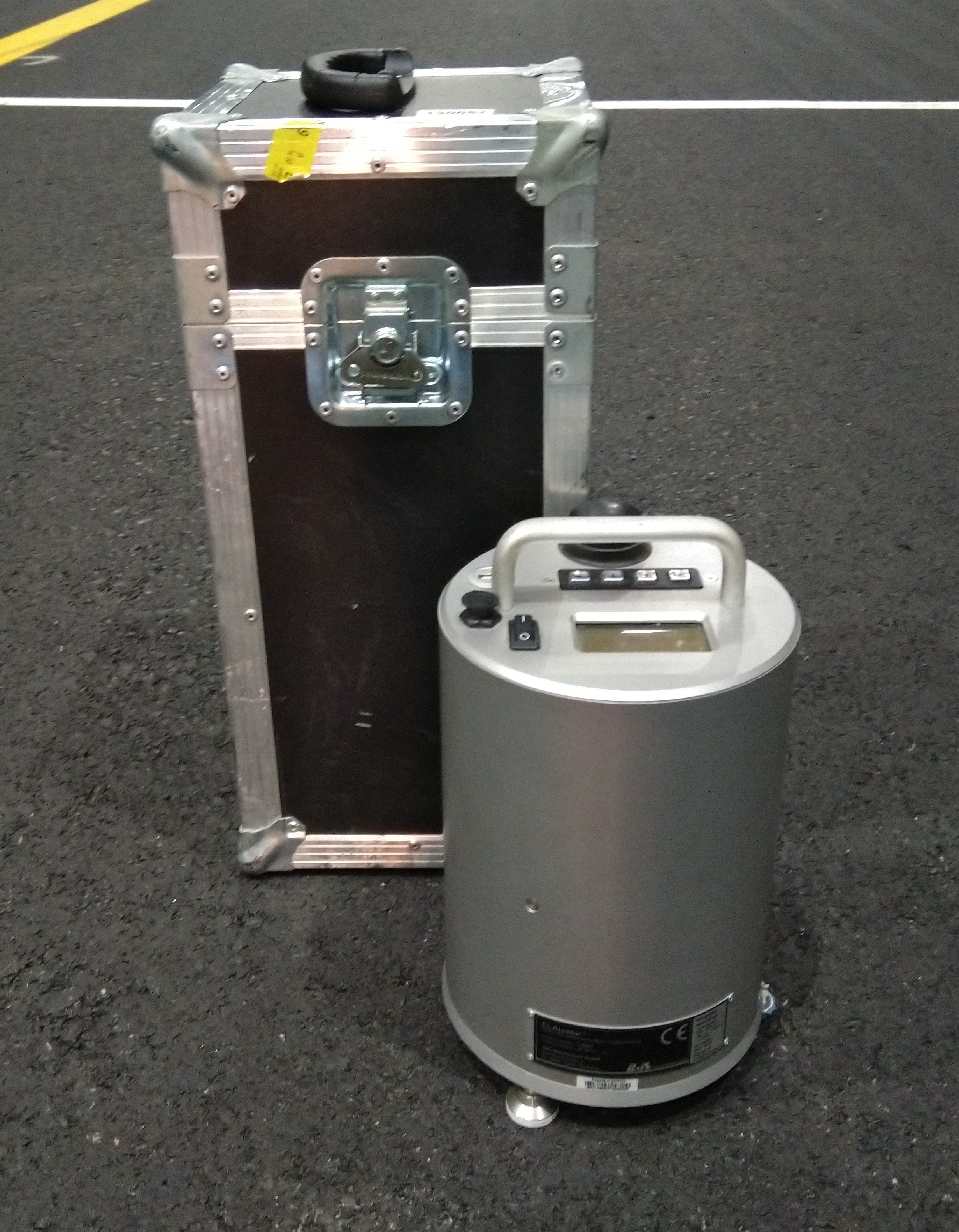Macrotexture Laser Scanner

Macrotexture Laser Scanner and Case (Click to Zoom)
The macrotexture laser scanner is a testing device used to determine the pavement texture of small areas, specifically the mean profile depth (MPD) and estimated texture depth (ETD). These indexes can be used to predict the friction of wet pavement, which is useful in pavement design. In addition, a transformation of MPD can be used to estimate mean texture depth (MTD), which traditionally requires more complex equipment.
The device consists of a laser scanner, a data system, supporting feet, and a carrying handle. The laser is bottom-mounted and faces downward. It scans the height of the pavement surface in a circular path. This circumference measurement has a standard length of 400 mm, which can be altered if necessary. The device performs a test pass autonomously; the operator only has to position the device and press the start button. The test location density can be adjusted if better accuracy or faster results are desired.

Scan Area of the Macrotexture Laser Scanner (Click to Zoom)
Once the test starts, the device performs a full scan procedure in a few seconds, then executes calculations for the indexes. First, the 400 mm circumference is divided into four baselengths (100 mm each). Each baselength is further divided in half, and the highest peak is determined per half (50 mm sections). The difference between each peak and the average level of the baselength (100 mm section) is calculated. These eight differences are averaged to determine MPD. The ETD is calculated from MPD using an equation. For accuracy, the device runs two scans (and thus two calculations for MTD and ETD per test) and averages the results.
The macrotexture laser scanner has several notable advantages. Compared to older methods of determining texture (Moore outflow meter, SRT pendulum test, sand-patch method), it does not require any consumables to perform a test. It is also faster; a test is performed and saved in a few seconds. Because the device performs a test autonomously operator error is less likely to occur. In addition, it is relatively small and easy to transport.
Return to NDT Technology Overview